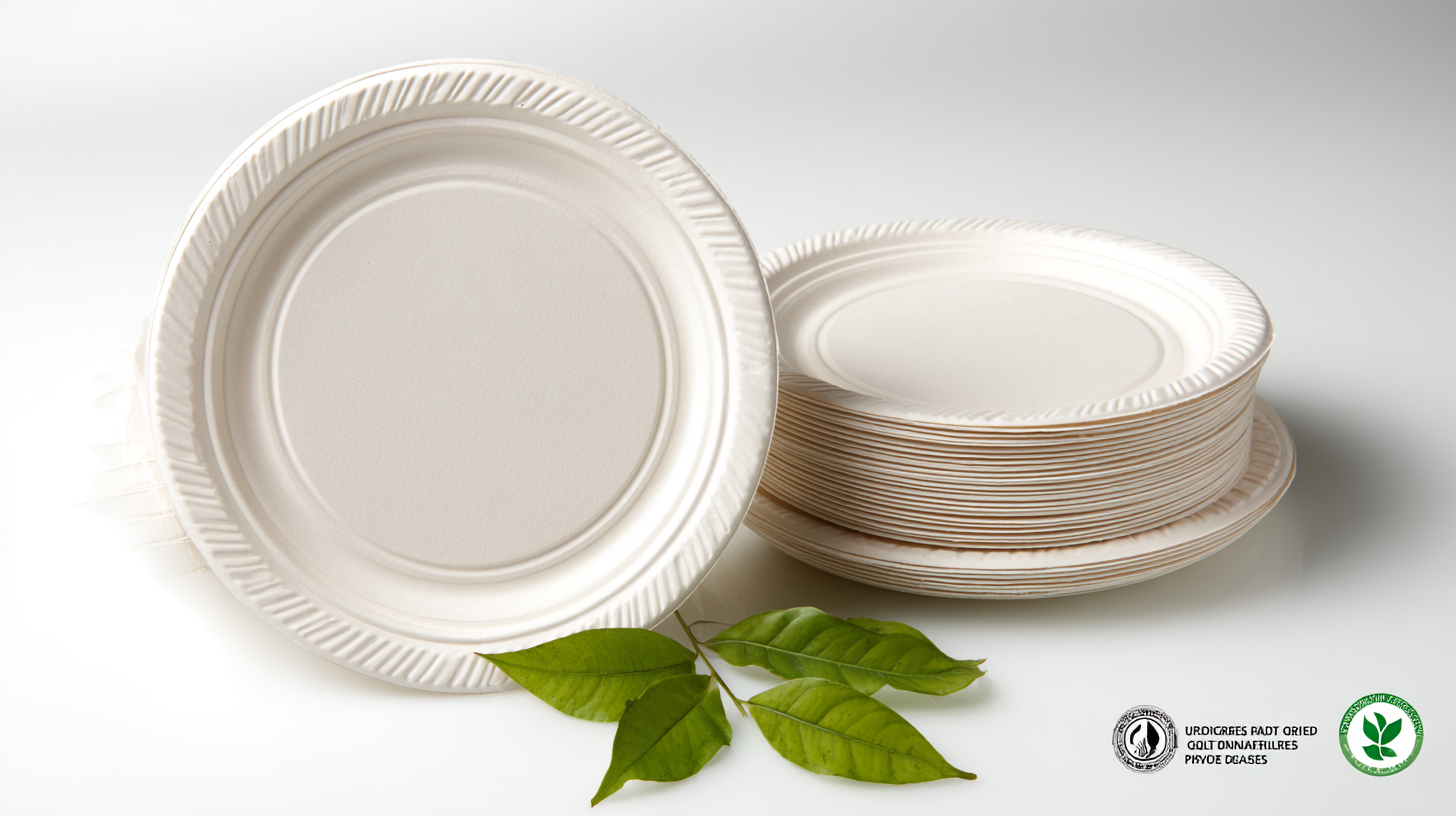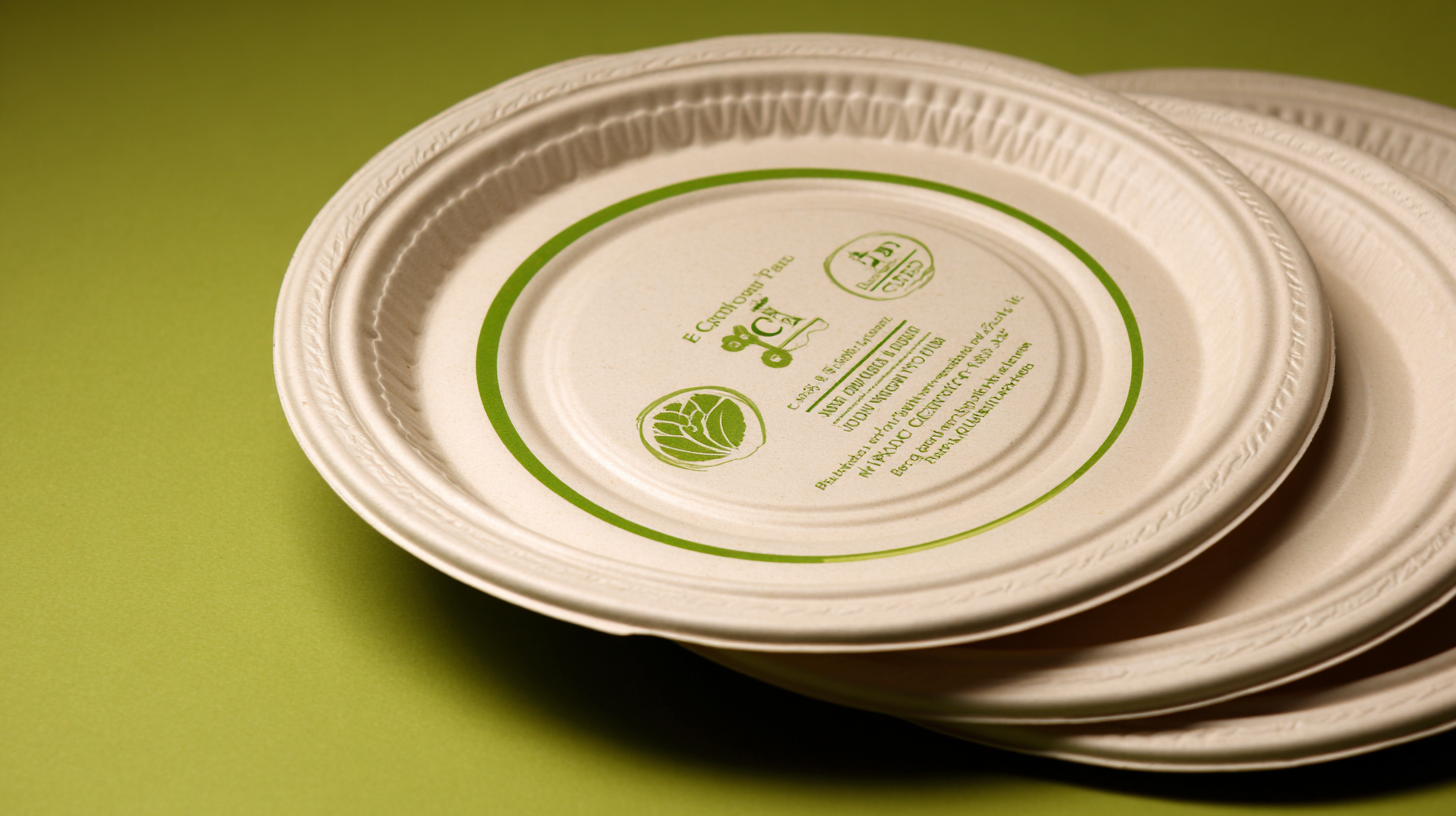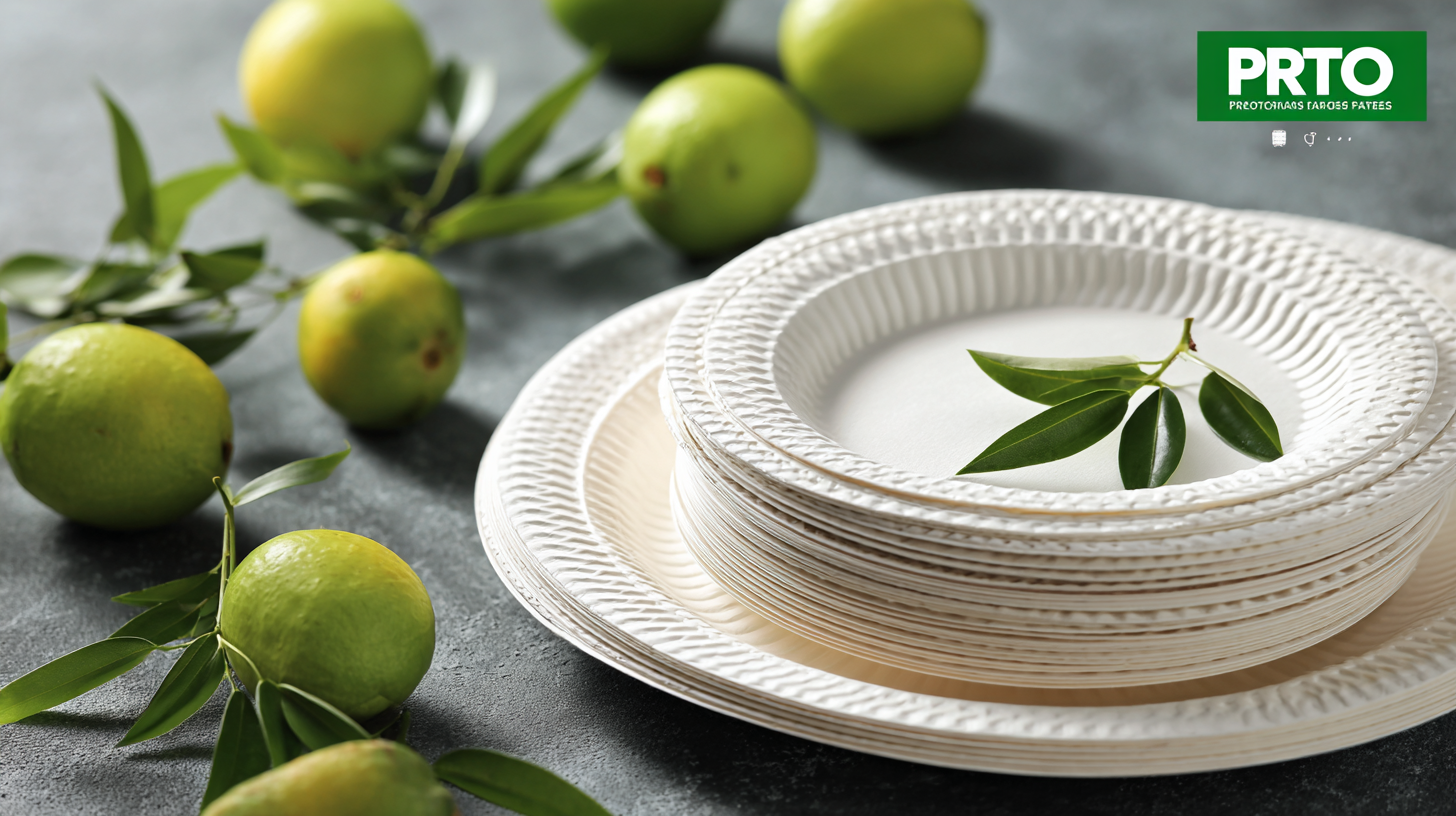Leave Your Message
As the global demand for sustainable products grows, the market for Biodegradable Paper Plates is gaining significant traction. According to a report by Future Market Insights, the biodegradable plates segment is expected to witness a substantial growth rate of over 7% between 2020 and 2025, driven by the increasing awareness of environmental concerns and stringent regulations against plastic waste. These eco-friendly alternatives not only provide an effective solution for reducing landfill waste, but they also meet the rising consumer preference for sustainable dining options. Real-world case studies reveal successful applications in various sectors ranging from food services to event management, where businesses are adopting biodegradable paper plates to align with green initiatives. This blog will explore the current trends, industry applications, and the types of biodegradable paper plates available, emphasizing their pivotal role in paving the way toward a greener future by 2025.

The global market for biodegradable paper plates is projected to witness significant growth, driven by increasing environmental awareness and the need for sustainable dining solutions. According to a recent report by Future Market Insights, the biodegradable paper plates market is expected to expand at a robust CAGR of 6.5% through 2025, reaching a valuation of approximately $1.2 billion. As businesses embrace eco-friendly practices, the demand for compliant import and export certification for these products has never been more critical.
Best practices for certification involve understanding and adhering to both domestic and international regulations. For instance, in the United States, products made from biodegradable materials must comply with the ASTM D6400 standards, which outline specific testing methods for compostable products. Similarly, in the European Union, the EN 13432 standard is crucial for ensuring that biodegradable paper plates meet quality and environmental requirements. Manufacturers looking to access global markets should invest in robust quality control systems and thorough documentation processes to streamline compliance and avoid potential delays in international trade. By doing so, they can effectively position themselves within this rapidly evolving market landscape.
| Region | Market Size (USD Million) | Growth Rate (%) | Key Drivers |
|---|---|---|---|
| North America | 300 | 7.5 | Increased environmental awareness, government regulations |
| Europe | 250 | 6.8 | Sustainability trends, consumer demand for eco-friendly products |
| Asia Pacific | 500 | 10.2 | Population growth, urbanization, increased hospitality sector |
| Latin America | 150 | 5.0 | Growing restaurant industry, increasing exports |
| Middle East & Africa | 100 | 4.5 | Rising awareness of plastic waste, tourism growth |
The biodegradable paper plate market is poised for significant growth as we move towards 2025. Key trends driving this market include the increasing demand for sustainable and eco-friendly alternatives to traditional plastic tableware. As global awareness of environmental issues escalates, consumers are actively seeking products that minimize ecological impact. This shift is contributing to an estimated compound annual growth rate (CAGR) of 5.4% for the biodegradable paper plate sector between now and 2025.
In parallel, the overall packaging industry is experiencing a transformative phase, as highlighted by predictions in various market reports. For instance, the alcohol packaging market is projected to reach a value of $735.5 billion by 2025, driven by rising consumer demand globally. Similarly, the tea packaging market is expected to grow at a CAGR exceeding 5.4% due to increased tea consumption. Such data underscores a broader trend towards more sustainable packaging solutions across multiple sectors, reinforcing the necessity for biodegradable materials like paper plates. As consumers prioritize sustainability, the shift towards biodegradable paper products is likely to reshape the packaging landscape significantly.

In recent years, the market for biodegradable paper plates has witnessed significant growth, reflecting a shift towards more sustainable practices within the food service industry. According to a report by Fortune Business Insights, the global biodegradable plates market is projected to reach USD 5.8 billion by 2025, growing at a CAGR of 9.5%. This surge is fueled by increasing consumer awareness regarding environmental conservation and the harmful effects of plastic waste. Companies that have successfully embraced this change have seen remarkable financial success, including a notable firm generating over 900 million in annual revenue from single-use dining products.
Case studies from leading businesses illustrate effective strategies in the biodegradable tableware market. One exemplary company not only focuses on innovative development in biodegradable materials but also emphasizes strong partnerships with major food service brands. By offering both biodegradable and traditional products, firms can cater to a wider audience while gradually educating consumers on sustainable choices.
Furthermore, recent data reveals that the restaurant industry in China reported an income exceeding 5.29 trillion, marking a 20.4% increase from the previous year, highlighting the rampant demand for eco-friendly dining solutions. As companies like these continue to thrive, they set benchmarks for others in the industry, proving that environmental responsibility and profitability can go hand in hand.
 To ensure compliance with eco-friendly standards for biodegradable paper plates, businesses must first understand the materials used in their products. Choosing innovative and sustainable sources, such as agricultural waste or recycled fibers, can significantly reduce the environmental impact. It's essential to evaluate suppliers and their manufacturing processes, ensuring that they align with sustainability benchmarks set by recognized standards such as ASTM D6400 or EN 13432.
To ensure compliance with eco-friendly standards for biodegradable paper plates, businesses must first understand the materials used in their products. Choosing innovative and sustainable sources, such as agricultural waste or recycled fibers, can significantly reduce the environmental impact. It's essential to evaluate suppliers and their manufacturing processes, ensuring that they align with sustainability benchmarks set by recognized standards such as ASTM D6400 or EN 13432.
Next, companies should implement a rigorous testing phase for their products to guarantee they meet biodegradability claims under various conditions. This includes conducting laboratory tests and real-world assessments to evaluate the decomposition timeline. Additionally, comprehensive labeling that clearly communicates the eco-friendly features of the plates will not only aid transparency but also educate consumers, fostering a strong brand image centered around sustainability. By following these steps, businesses can confidently navigate the market while contributing to a greener planet by 2025.
The future of biodegradable paper plates is being shaped by innovative materials and technologies that not only enhance performance but also focus on sustainability. Bio-based composites, which incorporate natural fibers and polymers, are emerging as key players in the production of these eco-friendly alternatives. By utilizing plant-derived resources, manufacturers can create plates that decompose efficiently without leaving harmful residues, thus appealing to environmentally conscious consumers.
Additionally, advancements in manufacturing processes are revolutionizing the way biodegradable paper plates are produced. Techniques such as extrusion and molding with compostable coatings are streamlining production while ensuring that the final product meets the necessary standards for durability and usability. Furthermore, innovations in biopolymer technologies are paving the way for creations that can mimic the functionality of traditional plastic plates—offering waterproofing and grease resistance while remaining fully compostable. This combination of engineered materials and cutting-edge technologies is set to redefine the dining experience, making single-use products not only sustainable but also premium in quality.
